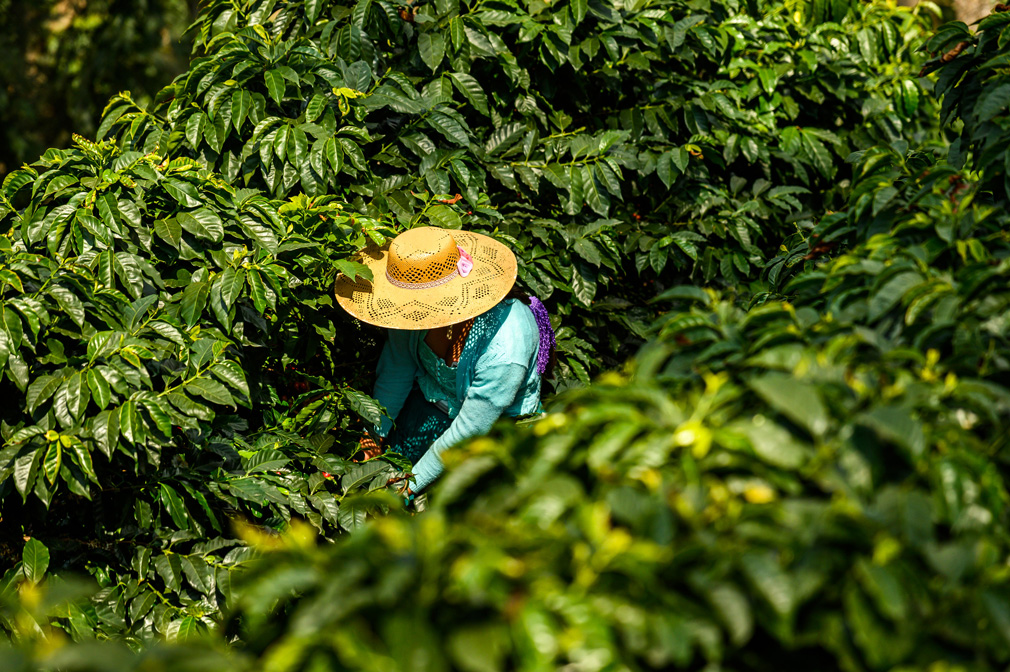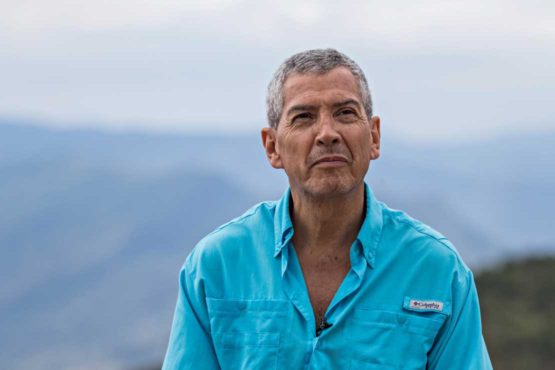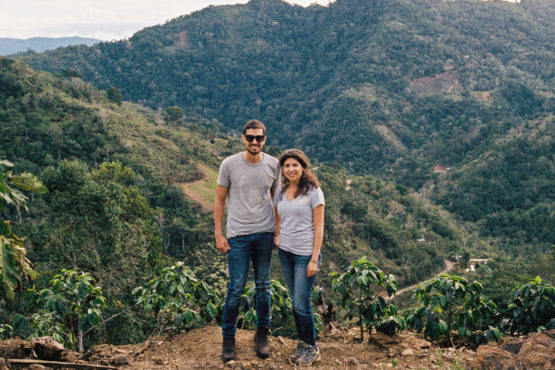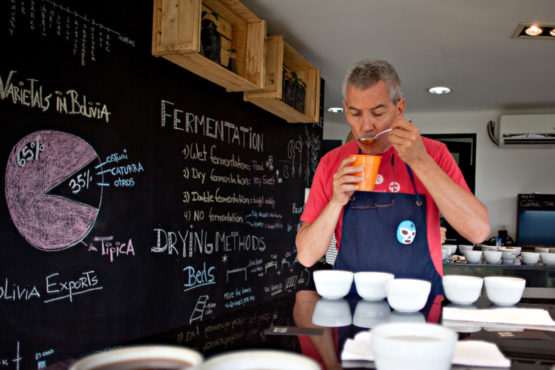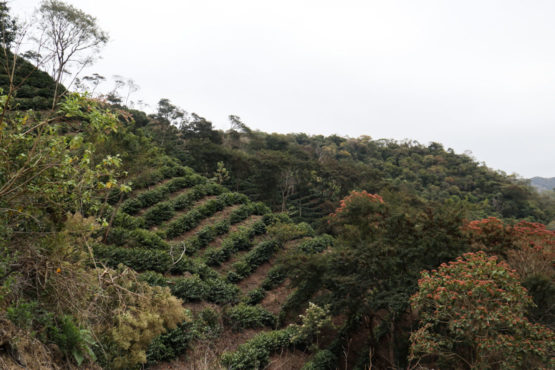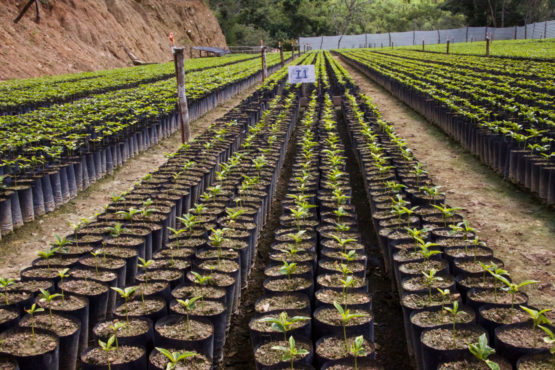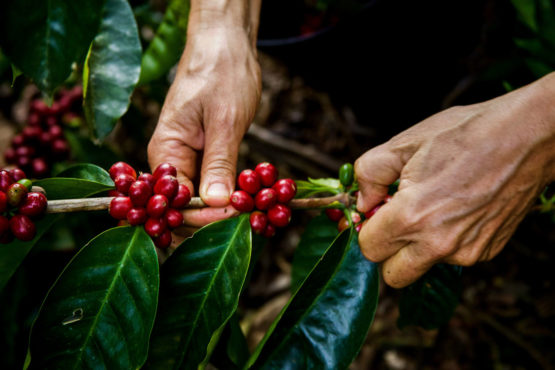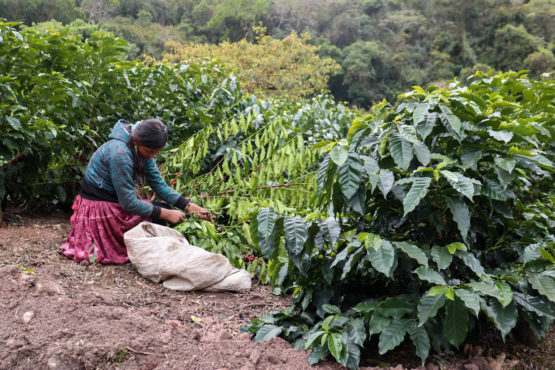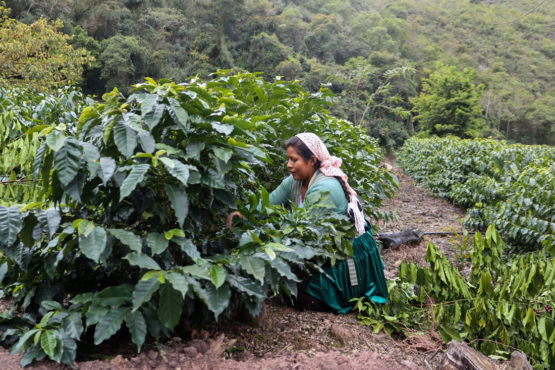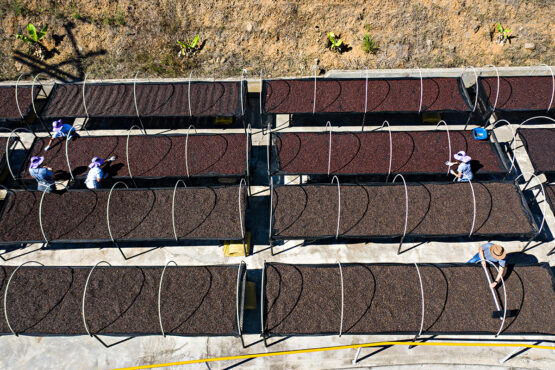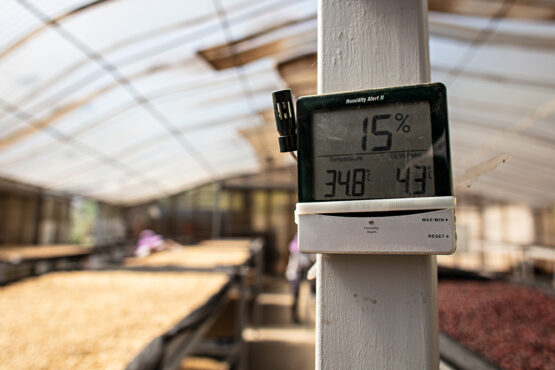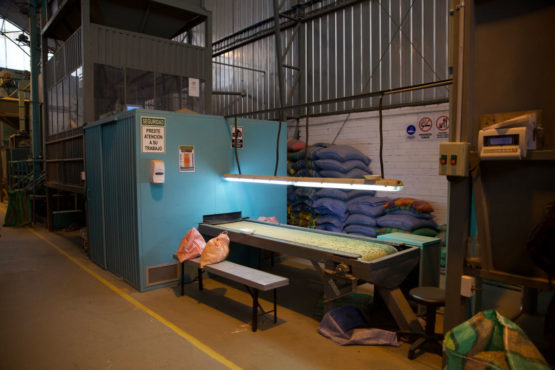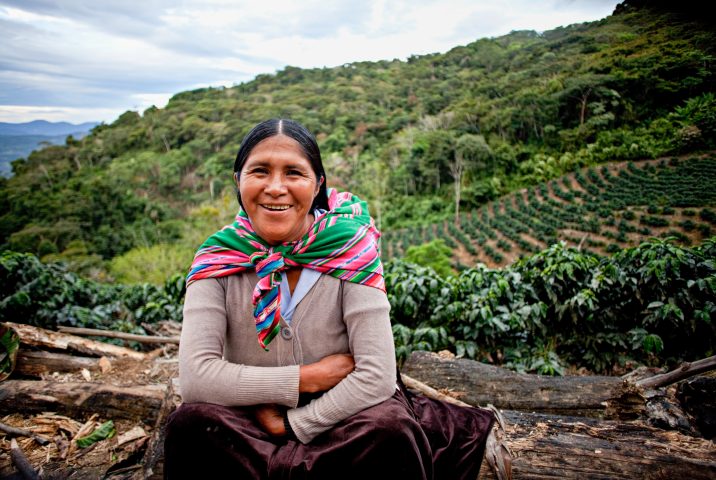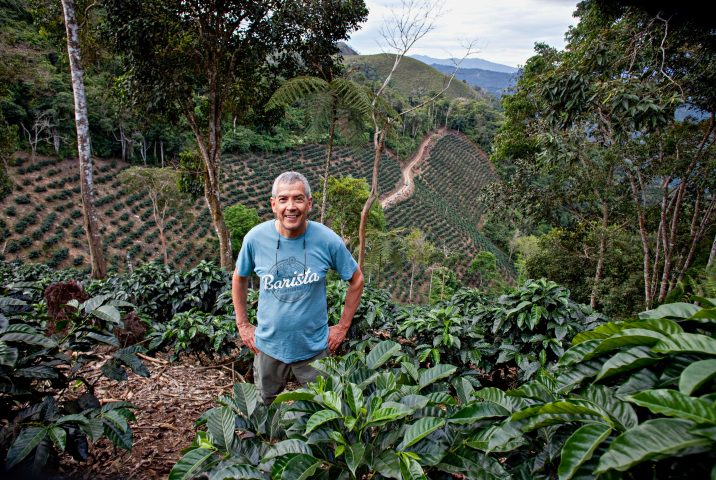Floripondio Gesha Natural
Sweet and silky, with purple grape, Turkish Delight and oolong tea. Vanilla and jasmine florals on the finish.
This 100% Gesha 300kg micro-lot comes from Floripondio, one of five farms owned and operated by the Rodríguez family in Bolivia’s Samaipata region.
Samaipata is a relatively new coffee growing region located in the eastern department of Santa Cruz, at the foot of the Bolivian Andes. The Rodríguez family, who also own the exporting business Agricafe Bolivia, first established their business in the traditional coffee growing region of Caranavi, where they currently operate eight farms and a wet mill. In 2012 they expanded to the region of Samaipata, which is historically known for producing food crops like fruit and vegetables.
This was risky move – coffee had never been planted here before – but Pedro recognised the region had the right conditions to produce exceptional quality coffee, with high elevations, nutrient-rich soil and a similar climate to Caranavi’s (with the main difference being that Samaipata is a little less tropical and drier). After their success in growing exceptional coffee at their first farm in the region, El Fuerte, the Rodríguez family have continued investing more heavily in Samaipata, planting three more farms, including Floripondio in 2014, and building a wet mill to process the coffees grown here.
Samaipata means ‘Rest of the Heights’, and is a small, picturesque town. A scenic road that runs along a beautiful river leads to the town centre, attracting Bolivians and tourists alike. The valley surrounding the town ranges between 1,600-1,800 meters above sea level, and has a fairly extreme climate. During the day the temperature is 25-30°C, dropping to as low as to 8-10°C during the night. This slows down the ripening of the coffee cherries, allowing the sugars of the fruit to concentrate in the flesh and bean, which in turn helps produce an incredibly sweet and complex coffee.
This 47 hectare farm (29 of which are planted with coffee) is found at a staggering 1,710 meters above sea level. It has two breathtaking viewpoints: one over the spectacular Andes mountain ranges , and another over the Amboró National Park, which is considered as having some of the world’s greatest biodiversity of flora and fauna. This protected park park is located west of the department of Santa Cruz, in the so-called “Codo de los Andes”, where the western mountain range changes course to the south.
Floripondio’s high elevation, tropical microclimate and distinct soil profile, made it the ideal place for the Rodríguez family to establish their variety nursery. To date, they have planted and trialled over 50 varieties at the farm, with the objective to work out which are best suited to the land and this particular latitude and elevation. Lemon and tangerine trees separate each of the varieties planted, and the fruit is sold at the local markets. This particular lot is 100% Gesha – a variety renowned for its exceptional cup quality and distinct flavour profile.
Gesha seeds were originally collected from Ethiopian coffee forests in the 1930s. They were initially kept and studied at the Tanzania Coffee Research Institute, and subsequently at Costa Rica’s Centro Agronómico Tropical de Investigación y Enseñanza (known as CATIE). Both institutes recognised the variety’s resistance to coffee leaf rust, yet it was not propagated thoroughly due to the tree’s brittle branches. Luckily, in the 1960s, the variety was distributed to farmers in Panama by Francisco “Pachi” Serracin. Gesha trees made their way to the country’s Boquete region, where they grew at high elevations without attracting much attention from local farmers. It wasn’t until the Peterson family, in Boquete’s Hacienda La Esmeralda, noticed a number of trees that had not been affected by a recent bout of leaf rust on a newly-acquired plot of land, and decided to separate and cultivate them. The rest is history: the lot produced by these trees went on to win the Best of Panama competition in 2004, as its delicate, floral aroma and distinct flavour profile pushed the boundaries of what coffee could taste like.
The family’s learnings have also been shared with local producers through a training program they has developed called ‘Sol de la Mañana.’ Head here to learn more about this wonderful program, and here to learn more about the incredible work the Rodríguez family and Agricafe are doing in Bolivia.
Floripondio gets its name from the Floripondio flowers (commonly known as Angel’s Trumpet in English) that are native to the area and grow throughout the farm. The flower is thought to possess some hallucinogenic properties, and legend has it that as soon as you lay down beneath a Floripondio tree you start dreaming. This is apt, as the natural scenery at Floripondio is breathtakingly beautiful and can at times, seem like something out of a dream.
HOW THIS COFFEE WAS PROCESSED
Pickers from the Samaipata community carefully handpick the coffee at Floripondio every day during the harvest. These pickers have been trained to select only the very ripest cherries and pass through the farm every day to ensure cherries are only picked at thier prime.
This coffee was carefully picked and processed on the same day at the Rodríguez family’s wet mill located at one of their nearby farms, El Fuerte.
Pedro draws a lot of inspiration from the wine industry in his approach to coffee production, and is always innovating and trialling different processing techniques. After being picked and weighed, the cherries for this lots were placed on a conveyor belt and disinfected, in a similar process used for wine grapes. They were then carefully washed and laid out to dry on raised African beds and turned every hour for around 14 days, until they reached 11.5% humidity.
Once the coffee was dry, it was transported to La Paz where it was rested before being milled at Agricafe’s dry mill, La Luna. At this state-of-the-art mill, the dried pods were first hulled and sorted using machinery, and then by a team of workers who meticulously sorted the coffee again (this time by hand) under UV and natural light. The mill is one of the cleanest and most impressive we have seen – you can read more about it here.
